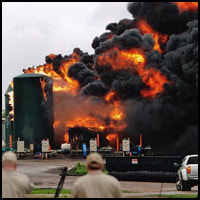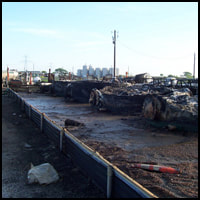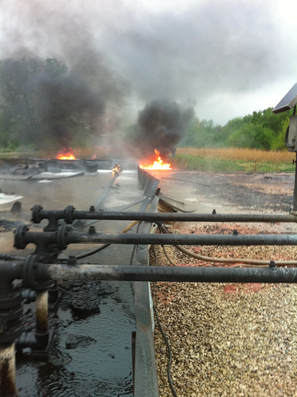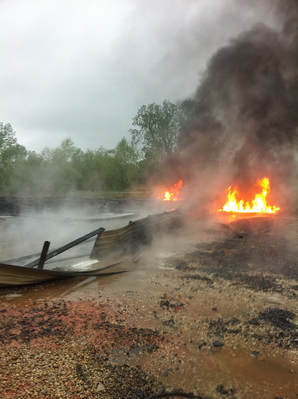Not all Containment Systems are Equal
A customer is flooded with many options and styles of containments, the market is awash in styles and types. Going on 20 years Trimac has been installing Secondary Containment spill solutions. Trimac was not a new upstart, we were branched from another division within the Trimac family of companies. We spent numerous hours testing different types of systems, some low cost and some very high cost. We felt it was better to use a proven system in lieu of developing our own and after many months we chose the systems we now install. There are so many companies that have decided to go the lowest cost route and label that system "the best". We chose to not use this method but rather we chose to install the very best system, not for us as much as the customer. The system we install and recommend will withstand anything the oilfield can send its way. We choose to install corrugated galvanized metal that was born many years prior not in the oilfields but from the farming industry. The metal we use was used and still is used in housing the food we eat and the fertilizer that makes it grow. Because of the long life of these systems in housing very corrosive fertilizer and standing up to the test of time in combating the rust that eats away at the integrity of the metal we feel confident in knowing that when we install one of them at your location we can sleep peacefully knowing that our motto of "Protecting our Future Generations" holds true. We do offer a thin gauge metal system for those that want to go this path, its not our recommendation to use these systems. However we will educate the customer and then let the customer decide whats best for their needs.
I don't just install the systems we use because they have been proven the best by rigorous testing, my thought many years ago when making the decision on which system to use was of my children and grandchildren and this beautiful land we call home. I wanted it protected and the decision to use what we do was wholly based on this view, not profit margins or ease of installation but my children and their children and the many generations that will come after us. If we don't protect that future, who will.
Andy McCaslin, CEO and Founder
Why we recommend a corrugated system
There will come a time when your containment system will be put to a test and how it performs during this time will determine the extent of the damage done to the surrounding properties and life. We have seen our system tested to the most extremes and one example was a fire in Cresson, Texas. This disposal facility was protected from spilling by one of our corrugated containment systems. There was a lighting strike that set the place on fire. As you can see in the pics below the fire was about as bad as a fire can be. Our system withstood these high temperatures for many hours and the aftermath shows a metal system that was still standing and still holding liquids. We actually returned to this site after the fire and had to replace one single sheet of metal that was bent by heavy falling debris and even then was not bent enough to allow the escape of liquids.
Why we do not recommend thin gauge
Thin metals buckle under heat stress Testing of thin gauges show's failure after failure Thin gauge metal has a 100% failure rate during testing, not one system withstood testing! |
Thin gauge systems are systems that have been developed for one reason only and that reason is simply cost. We understand the need to keep costs low and manageable and this is not something we are against. However time and time again this initial low upfront cost is multiplied many times over because of spillage of the failed containment structure. Even though energy companies have deep pockets and during a natural disaster insurances can be used to cover the cleanup costs it does not necessarily mean its ok. The expense will more often than not cause future issues of being able to continue insurance coverage and cause yet again a need to install a far less superior product. As shown in the Cresson fire the higher upfront cost of installing a system that can withstand extreme failures cause the long run to be far less expensive. Even when we speak of the cost of a corrugated systems being more expensive we are only talking of 10% to 20% higher upfront costs. When the systems are viewed in light of this it is easy to see why the thin gauge metals are pushed so hard and that is simply profit margins. Those that install only thin gauge metals realize profit margins in the 60% to 70% range in lieu of corrugated systems having a profit margin of 10% to 20%. Trimac will not utilize this path as it is unfair to the customer and unfair to the consumer in that the price is ultimately passed on to them in the cost of fuel, food and products made with hydrocarbons which really is 100% of all products. We are here for the future generations, we protect not only from harsh chemicals but over costs as well.





